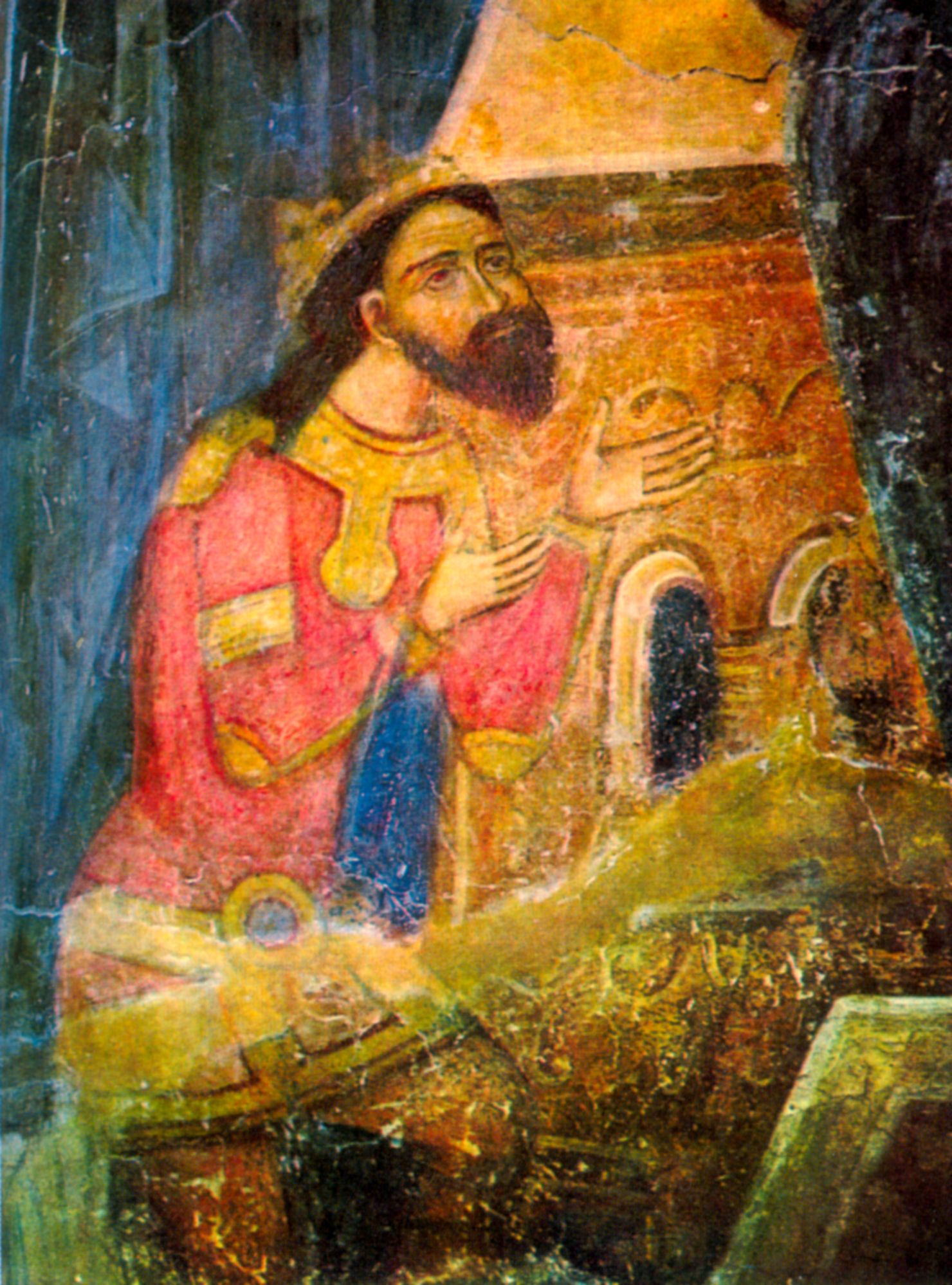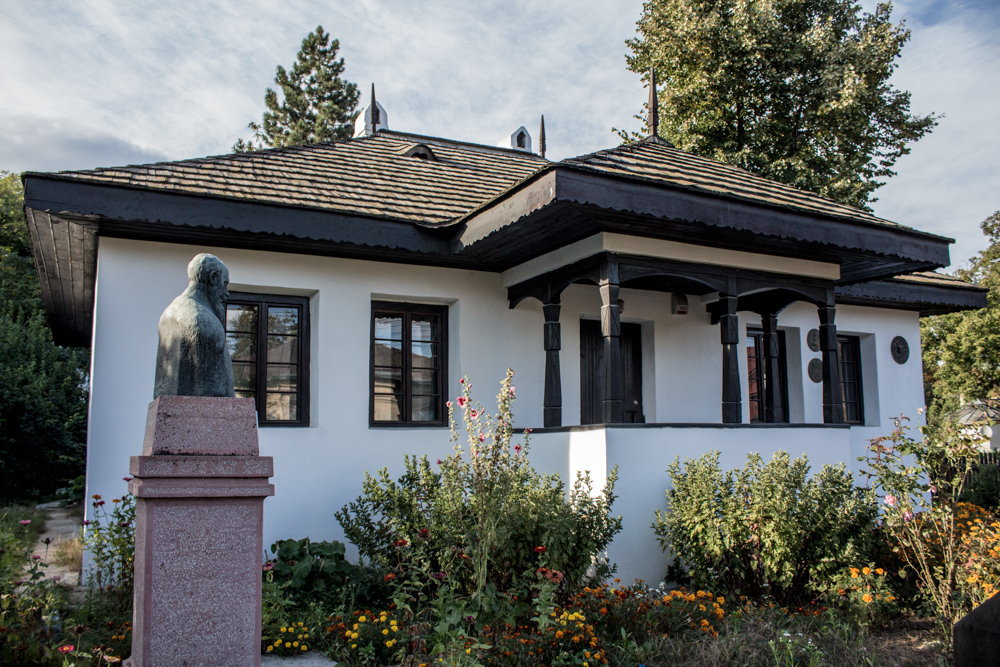|
Emanuel Giani Ruset
Emanuel or Manolache Giani Ruset (1715 – 8 March 1794) was a Prince of Wallachia (May 1770 – October 1771), and Prince of Moldavia (May 11, 1788 – October 1788). He was a Phanariote Phanariots, Phanariotes, or Fanariots ( el, Φαναριώτες, ro, Fanarioți, tr, Fenerliler) were members of prominent Greek families in Phanar (Φανάρι, modern ''Fener''), the chief Greek quarter of Constantinople where the Ecumenic ... and member of the Rosetti family. Life Emanuel Giani Ruset is the son of a Greek pope named Ioannis, Giannis, or Tzanis and Euphrosine Ruset, great-granddaughter of Prince Antonie Ruset. The Italianization of the name seems to be a fantasy of a cleric in various documents; in any case the phanariots, as dragogists (interpreter-translators of the "Sublime Porte") were all polyglot and sometimes italianized or Frenchified their names. He owes his ascension to the influence of his maternal family related to the Phanariot princes Mavrocordato, Car ... [...More Info...] [...Related Items...] OR: [Wikipedia] [Google] [Baidu] |
List Of Rulers Of Wallachia
This is a list of rulers of Wallachia, from the first mention of a medieval polity situated between the Southern Carpathians and the Danube until the union with Moldavia in 1859, which led to the creation of Romania. Notes Dynastic rule is hard to ascribe, given the loose traditional definition of the ruling family. On principle, princes were chosen from any family branch, including a previous ruler's bastard sons, being defined as ''os de domn'', "of Voivode marrow", or as having ''heregie'', "heredity" (from the Latin ''hereditas''); the institutions charged with the election, dominated by the boyars, had fluctuating degrees of influence. The system itself was challenged by usurpers, and became obsolete with the Phanariote epoch, when rulers were appointed by the Ottoman Sultans; between 1821 and 1878 (the date of Romania's independence), various systems combining election and appointment were put in practice. Wallachian rulers, like the Moldavian rulers, bore the titles of ''V ... [...More Info...] [...Related Items...] OR: [Wikipedia] [Google] [Baidu] |
Rosetti Family
The House of Rosetti (also spelled ''Ruset'', ''Rosset, Rossetti'') was a Moldavian boyar princely family of Byzantine Greek and Italian (from Genoa) origins. There are several branches of the family named after their estates: Roznovanu, Solescu, Bălănescu, Răducanu, Ciortescu, Tescanu, and Bibica. The Rosetti family in Wallachia is another branch of the family who initially settled in Moldavia. Notable members *Alexandru Rosetti, linguist *Elena Cuza, philanthropist; the Princess consort of the United Principalities and the wife of Prince Alexandru Ioan Cuza *C. A. Rosetti, Prime Minister, statesman, and writer *Maria Rosetti, political activist, journalist, philanthropist and socialite *Maria Tescanu Rosetti, lady-in-waiting *Radu D. Rosetti, poet *Radu R. Rosetti, general and historian *Theodor Rosetti, writer, journalist and politician who served as Prime Minister of Romania *Nicolae Rosetti-Bălănescu, lawyer and politician *Emanuel Giani Ruset, Prince of Wallachia, and ... [...More Info...] [...Related Items...] OR: [Wikipedia] [Google] [Baidu] |
Rulers Of Moldavia And Wallachia
A ruler, sometimes called a rule, line gauge, or scale, is a device used in geometry and technical drawing, as well as the engineering and construction industries, to measure distances or draw straight lines. Variants Rulers have long been made from different materials and in multiple sizes. Some are wooden. Plastics have also been used since they were invented; they can be molded with length markings instead of being scribed. Metal is used for more durable rulers for use in the workshop; sometimes a metal edge is embedded into a wooden desk ruler to preserve the edge when used for straight-line cutting. in length is useful for a ruler to be kept on a desk to help in drawing. Shorter rulers are convenient for keeping in a pocket. Longer rulers, e.g., , are necessary in some cases. Rigid wooden or plastic yardsticks, 1 yard long, and meter sticks, 1 meter long, are also used. Classically, long measuring rods were used for larger projects, now superseded by ta ... [...More Info...] [...Related Items...] OR: [Wikipedia] [Google] [Baidu] |
Year Of Death Unknown
A year or annus is the orbital period of a planetary body, for example, the Earth, moving in its orbit around the Sun. Due to the Earth's axial tilt, the course of a year sees the passing of the seasons, marked by change in weather, the hours of daylight, and, consequently, vegetation and soil fertility. In temperate and subpolar regions around the planet, four seasons are generally recognized: spring, summer, autumn and winter. In tropical and subtropical regions, several geographical sectors do not present defined seasons; but in the seasonal tropics, the annual wet and dry seasons are recognized and tracked. A calendar year is an approximation of the number of days of the Earth's orbital period, as counted in a given calendar. The Gregorian calendar, or modern calendar, presents its calendar year to be either a common year of 365 days or a leap year of 366 days, as do the Julian calendars. For the Gregorian calendar, the average length of the calendar year (the mea ... [...More Info...] [...Related Items...] OR: [Wikipedia] [Google] [Baidu] |
Rulers Of Wallachia
This is a list of rulers of Wallachia, from the first mention of a medieval polity situated between the Southern Carpathians and the Danube until the union with Moldavia in 1859, which led to the creation of Romania. Notes Dynastic rule is hard to ascribe, given the loose traditional definition of the ruling family. On principle, princes were chosen from any family branch, including a previous ruler's bastard sons, being defined as ''os de domn'', "of Voivode marrow", or as having ''heregie'', "heredity" (from the Latin ''hereditas''); the institutions charged with the election, dominated by the boyars, had fluctuating degrees of influence. The system itself was challenged by usurpers, and became obsolete with the Phanariote epoch, when rulers were appointed by the Ottoman Sultans; between 1821 and 1878 (the date of Romania's independence), various systems combining election and appointment were put in practice. Wallachian rulers, like the Moldavian rulers, bore the titles of ''V ... [...More Info...] [...Related Items...] OR: [Wikipedia] [Google] [Baidu] |
Rulers Of Moldavia
This is a list of rulers of Moldavia, from the first mention of the medieval polity east of the Carpathians and until its disestablishment in 1862, when it united with Wallachia, the other Danubian Principality, to form the modern-day state of Romania. Notes Dynastic rule is hard to ascribe, given the loose traditional definition of the ruling family (on principle, princes were chosen from any branch, including a previous ruler's bastard sons – being defined as ''os de domn'' – "of domn marrow", or as having ''hereghie'' – "heredity" (from the Latin ''hereditas''); the institutions charged with the election, dominated by the boyars, had fluctuating degrees of influence). The system itself was challenged by usurpers, and became obsolete with the Phanariote epoch, when rulers were appointed by the Ottoman Sultans. Between 1821 and 1862, various systems combining election and appointment were put in practice. Moldavian rulers, like Wallachian and other Eastern European rule ... [...More Info...] [...Related Items...] OR: [Wikipedia] [Google] [Baidu] |
Nicolas Iorga
Nicolae Iorga (; sometimes Neculai Iorga, Nicolas Jorga, Nicolai Jorga or Nicola Jorga, born Nicu N. Iorga;Iova, p. xxvii. 17 January 1871 – 27 November 1940) was a Romanian historian, politician, literary critic, memoirist, Albanologist, poet and playwright. Co-founder (in 1910) of the Democratic Nationalist Party (Romania), Democratic Nationalist Party (PND), he served as a member of Parliament of Romania, Parliament, President of the Chamber of Deputies of Romania, Deputies' Assembly and Senate of Romania, Senate, cabinet minister and briefly (1931–32) as Prime Minister of Romania, Prime Minister. A child prodigy, polymath and polyglot (person), polyglot, Iorga produced an unusually large body of scholarly works, establishing his international reputation as a Medievalism, medievalist, Byzantine studies, Byzantinist, Romance studies, Latinist, Slavic studies, Slavist, Art history, art historian and Philosophy of history, philosopher of history. Holding teaching positions at ... [...More Info...] [...Related Items...] OR: [Wikipedia] [Google] [Baidu] |
Alexandru Dimitrie Xenopol
Alexandru Dimitrie Xenopol (; March 23, 1847, Iaşi – February 27, 1920, Bucharest) was a Romanian historian, philosopher, professor, economist, sociologist, and author. Among his many major accomplishments, he is the Romanian historian credited with authoring the first major synthesis of the history of the Romanian people. Life Born in Iaşi, where he graduated from high school, he went on to Vienna in 1870 to study law and then to Berlin, where he studied philosophy. In 1868, he made his debut in ''Convorbiri Literare'' with a series of studies on Romanian traditions and on Romanian institutions. At first, Xenopol served as a prosecutor in Iaşi, but he later decided to dedicate himself to the study of history. Starting in 1883, he was a professor of universal history at the University of Iaşi, where he served as rector from 1898 to 1901. He was elected member of the Romanian Academy in 1893. In his 1899 French-language ''Les Principes fondamentaux de l'histoire'' ("Th ... [...More Info...] [...Related Items...] OR: [Wikipedia] [Google] [Baidu] |
Phanariotes
Phanariots, Phanariotes, or Fanariots ( el, Φαναριώτες, ro, Fanarioți, tr, Fenerliler) were members of prominent Greeks, Greek families in Fener, Phanar (Φανάρι, modern ''Fener''), the chief Greek quarter of Constantinople where the Ecumenical Patriarchate of Constantinople, Ecumenical Patriarchate is located, who traditionally occupied four important positions in the Ottoman Empire: Voivode of Moldavia, Voivode of Wallachia, Grand Dragoman, and Grand Dragoman of the Fleet. Despite their cosmopolitanism and often-Western education, the Phanariots were aware of their Greek ancestry and culture; according to Nicholas Mavrocordatos' ''Philotheou Parerga'', "We are a race completely Hellenic". They emerged as a class of wealthy Greek merchants (of mostly noble Byzantine Greeks, Byzantine descent) during the second half of the 16th century, and were influential in the administration of the Ottoman Empire's Balkan domains in the 18th century. The Phanariots usually b ... [...More Info...] [...Related Items...] OR: [Wikipedia] [Google] [Baidu] |
Grigore III Ghica
Grigore III Ghica (1724 – 12 October 1777) was twice the Prince of Moldavia between 29 March 1764 – 3 February 1767 and September 1774 – 10 October 1777 and of Wallachia: 28 October 1768 – November 1769. Biography He was the son of Alexandru Matei Ghica, with the position of dragoman, who was beheaded by the Sublime Porte and nephew of Grigore II Ghica's brother. Gregory III Ghica had a sister, Catherine (or Catinca), married to the Greek hetman Dumitru Sulgearoglu (also called Dimitrie Gheorghiadis Sulgearoglu). Catherine's descendants bore the name of her mother, Ghica, as Dora d'Istria states in her writing ''Gli Albanesi in Rumenia'' (1871): " ostachi Ghica ''Son of Catherine, sister of Gregory III, married to Demetrio Sutziaroglu. Catherine's descendants bear her mother's name''." As a gentleman, he is an enemy of Austria and a friend of Russia, and the intrigues help him a lot in his policy towards the Turks. Internally, it has regularized the collection of offices ... [...More Info...] [...Related Items...] OR: [Wikipedia] [Google] [Baidu] |
Moldavia
Moldavia ( ro, Moldova, or , literally "The Country of Moldavia"; in Romanian Cyrillic: or ; chu, Землѧ Молдавскаѧ; el, Ἡγεμονία τῆς Μολδαβίας) is a historical region and former principality in Central and Eastern Europe, corresponding to the territory between the Eastern Carpathians and the Dniester River. An initially independent and later autonomous state, it existed from the 14th century to 1859, when it united with Wallachia () as the basis of the modern Romanian state; at various times, Moldavia included the regions of Bessarabia (with the Budjak), all of Bukovina and Hertsa. The region of Pokuttya was also part of it for a period of time. The western half of Moldavia is now part of Romania, the eastern side belongs to the Republic of Moldova, and the northern and southeastern parts are territories of Ukraine. Name and etymology The original and short-lived reference to the region was ''Bogdania'', after Bogdan I, the fo ... [...More Info...] [...Related Items...] OR: [Wikipedia] [Google] [Baidu] |
.jpg)






